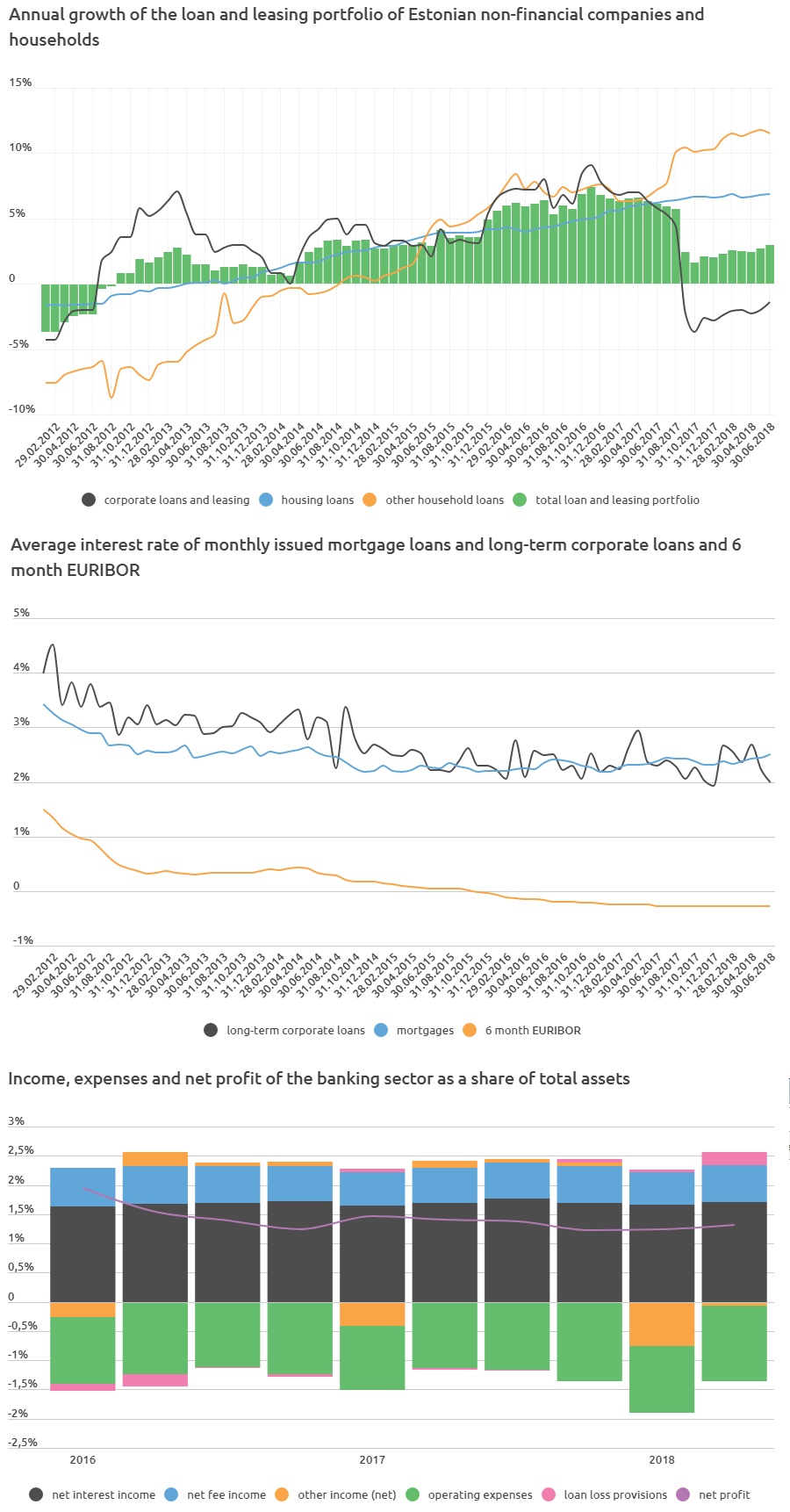Banks, Estonia, Financial Services, Loan
International Internet Magazine. Baltic States news & analytics
Saturday, 20.04.2024, 08:53
Bank profits decreased somewhat in the second quarter in Estonia
 Print version
Print versionThe value
of new car leases signed in June was 30% more than a year earlier, and the
annual growth of the car lease portfolio reached 20%. The annual growth of
other consumer loans was also rapid at almost 9%. The fast increase of consumer
loans reflects both the current favorable economic environment and increased
supply. Consumer loans and leases make up around one fifth of the total loan
and leasing portfolio of households.
The stock
of housing loans grew in June at around the same rate as it had in previous
months. 117 mln euros’ worth of new housing loans were taken out,
which was 12% more than a year earlier. The growth stems from higher-priced
real estate and larger average loan sums, but also from the fact that more
transactions were made. The annual growth of the housing loan portfolio has
been close to 7% over the past six months.
Corporate
loan growth has been more moderate than household loan growth due to low
investment activity. However, companies’ loans from banks operating in
Estonia did increase in the second quarter. The stock of new loans grew in all
major sectors compared to the year before, and the increase of the loan
portfolio has been relatively homogeneous.
The average
interest rate for new housing loans has risen somewhat since the start of the
year, reaching 2.5% in June. Despite being the highest level of the past
four years, it can still be considered low long-term. The average interest
rate of new corporate loans largely depends on the kind of companies that sign
loan contracts over a specific period and the kind of projects they undertake,
and it can therefore fluctuate quite a lot. In July, it was down to 2%.
The
deposits of Estonian households and companies grew rapidly alongside active
borrowing. The stock of deposits held by banks increased by almost 12% or
13.8 mln euros in a year.
The net
profit of the banking sector fell a bit in the second quarter of 2018. The
net profit of the quarter was 82.5 mln euros in total, which was 3% less than
in the previous year. At the same time, net interest income rose by almost 3%
year-on-year, mostly thanks to smaller interest expenses. Service fee income
increased, as did wage costs and administrative costs. One-off factors boosting
profit were the reversal of previous provisions, and dividends from
subsidiaries. As a result of the new income tax rules that took effect at
the start of the year, banks calculated around 8 mln euros for income tax
expenses in the second quarter.









 «The Baltic Course» Is Sold and Stays in Business!
«The Baltic Course» Is Sold and Stays in Business!

